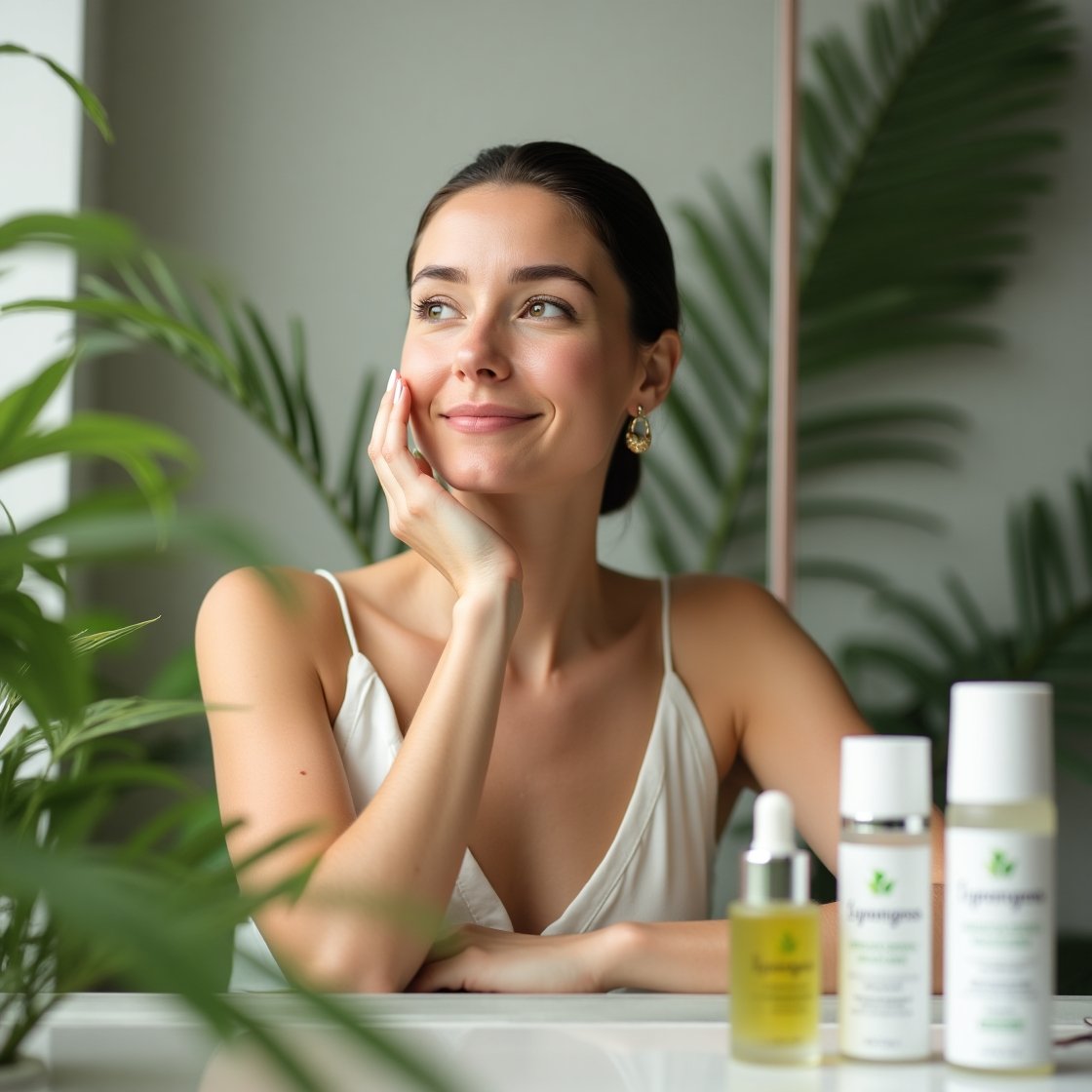1. Introduction
A promising new ingredient in the skincare industry has now entered the scene, marketing itself as Lyposingrass. This new ingredient has recently garnered the attention of dermatologists, beauty lovers, and natural skincare companies, and it looks to be a Selah to the skincare industry. So now the questions arise, What is Lyposingrass? what makes it a skincare revolution? What could it do to and for the skincare industry?
Good news for people who are constantly searching for new skincare is it is not as unknown as it seems and there is already a buzz circulating on the internet whether it be on social media, online shops, or in product descriptions. Also, it is being marketed as a constituent of a plant with extraordinary moisturizing and hydrating properties, skin repairing features, as well as effectively addressing the problems people face with the using preservatives in skincare. Whether the plant Lyposingrass actually has those properties or not, people are in search of more and more natural alternatives, and ever since the Us FDA relaxed it’s rules on new ingredients being introduced to the market, anything that is natural and doesn’t use preservatives is bound to sell off the shelves.
With this we have established that this new botanical extract could serve any and every person from product addicts to those who enjoy using the bare essentials. So without further ado, let us learn more about Lyposingrass, the mysteries surrounding it and the new botanical extract that is surging in popularity.
2. What Is Lyposingrass?
As one of the newer plant-based compounds emerging in the natural actives segment of skincare, Lyposingrass is on the crux of becoming a mainstream phenomenon. While more research is needed, Lyposingrass is believed Hydrosol that possesses a unique combination of calming and hydrating properties, making it ideal for sensitive, dry skin. Early research and anecdotal evidence suggest that Lyposingrass may contain a unique blend of antioxidants, calming agents, and hydrating elements..
Included usually in serums and facial oils, Lyposingrass is sorely needed in clean formulations, and alongside the calming botanicals such as aloe, chamomile, and green tea. Along with being an ideal addition in soothing creams and toners, it seems clear that Lyposingrass is an emerging wonder and must be researched more.
Lyposingrass’s name may not be popular yet, but it is undoubtedly set to make waves. As the skincare industry moves toward more plant-based products, it seems that Lyposingrass is positioning itself as another natural ingredient to be closely monitored.
3. Key Skincare Benefits of Lyposingrass
The Positive Impact of Lemongrass
Lemongrass benefits have been researched for several years, and are now being adopted in complementary medicine such as in the case of Memorial Sloane Kettering Cancer Center.
In skincare, lemongrass is commonly known by its botanical name, Cymbopogon schoenanthus. It is commonly known as fever grass, barbed wire grass or silky heads, and its origins are from Africa and Asia.
One of the most used culinary herbs in Asia, particularly in Thailand, is lemongrass; it is known for and used in over 140 species across the continent.
Lemongrass has also shown to furnish essential nutrients such as Calcium, Potassium, Manganese, Magnesium, Iron, and Vitamins A and C, Niacin, and folate.
In addition to the aforementioned benefits, the aroma of lemongrass is known to have its own benefits as well. In fact, one study suggests the delightful and fresh citrus scent has the ability to relax the mind and the body.
What sets Lyposingrass apart is its multi-functional role in skincare. It offers a balanced approach, providing both immediate soothing effects and long-term skin health improvements. Here are some of the most talked-about benefits:
- Deep Hydration: Lyposingrass appears to contain humectant properties that help draw moisture into the skin. This makes it especially useful in hydrating serums or creams for people with dry or dehydrated skin.
- Anti-Inflammatory Power: Users and early studies suggest that Lyposingrass has anti-inflammatory effects, helping to calm redness, irritation, or mild acne flare-ups. This makes it a natural ally for sensitive or reactive skin.
- Skin Barrier Support: With regular use, Lyposingrass may strengthen the skin’s protective barrier, reducing moisture loss and enhancing resilience against environmental stressors like pollution or UV damage.
- Brightening Effect: Some formulations with Lyposingrass are designed to improve skin tone and clarity, giving users a healthier, more radiant complexion without the harshness of strong acids or synthetic brighteners.
These benefits are the reason why Lyposingrass is being added to so many “soothing” or “glow-enhancing” skincare products on the market today.
4. How to Use Lyposingrass in Your Skincare Routine
Incorporating Lyposingrass into your skincare doesn’t require a complete routine overhaul. It’s typically featured in products like hydrating mists, facial serums, moisturizing creams, or even cleansing balms. Here’s how to get started:
- For Beginners: Try a toner or essence containing Lyposingrass to layer after cleansing and before moisturizing. This will allow the ingredient to prep your skin without overwhelming it.
- For Dry Skin: Use a serum or cream that features Lyposingrass as one of the top ingredients. It pairs well with hyaluronic acid and ceramides for enhanced hydration.
- For Sensitive Skin: Choose fragrance-free products that combine Lyposingrass with soothing ingredients like oat extract or calendula to calm inflammation and prevent redness.
- Pro Tip: Always patch test new ingredients, especially if you have known sensitivities or are using other actives like retinol or exfoliating acids.
5. Who Should Use It?
Lyposingrass is gentle enough for all skin types, but it’s especially beneficial for:
- People with sensitive, dry, or irritated skin
- Those seeking natural and plant-based skincare
- Anyone looking to reduce redness, improve hydration, or strengthen their skin barrier
It’s also a great option for people transitioning from traditional skincare to clean or minimal ingredient formulas. And because it plays well with most other ingredients, it can be easily added to existing skincare routines without concern.
6. Final Thoughts
Lyposingrass may not yet be a skincare superstar on every shelf, but it’s quickly building a loyal following among those who want effective, gentle, and nature-powered skincare. With its hydration-boosting, calming, and barrier-strengthening benefits, it fits beautifully into both minimalist and advanced skincare routines.
As always, the best way to know if an ingredient like Lyposingrass works for you is to try it thoughtfully — introduce it slowly, pay attention to how your skin reacts, and choose high-quality products that showcase it properly.
Whether you’re dealing with dryness, dullness, or sensitivity, Lyposingrass might just be the clean beauty secret your skin has been waiting for.
Frequently Asked Questions (FAQs)
1. What is Lyposingrass used for in skincare?
Lyposingrass is typically used to hydrate the skin, reduce inflammation, and support the skin’s natural barrier. It’s included in various serums, toners, and creams to calm irritation, improve skin texture, and enhance glow.
2. Is Lyposingrass suitable for all skin types?
Yes, Lyposingrass is generally safe for all skin types, including sensitive skin. Its gentle, plant-based nature makes it ideal for people with dry, reactive, or easily irritated skin. However, like any new ingredient, a patch test is recommended.
3. Can Lyposingrass be used with other active ingredients?
Absolutely. Lyposingrass pairs well with most skincare actives, including hyaluronic acid, niacinamide, and ceramides. It’s often used alongside calming or hydrating ingredients to enhance results without causing irritation.
4. How long does it take to see results from Lyposingrass?
While some users notice increased hydration and reduced redness within a few days, more visible improvements in skin texture and tone may take 2–4 weeks of consistent use, depending on the product and individual skin type.
5. Is Lyposingrass a natural or synthetic ingredient?
Lyposingrass is derived from natural sources, typically from a grass-like botanical plant. It’s often featured in clean beauty formulations and is valued for its eco-friendly profile and gentle effectiveness.



